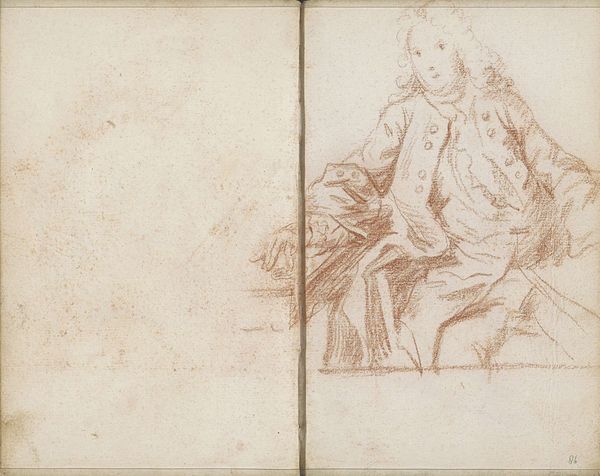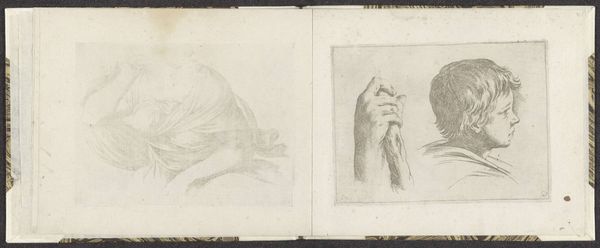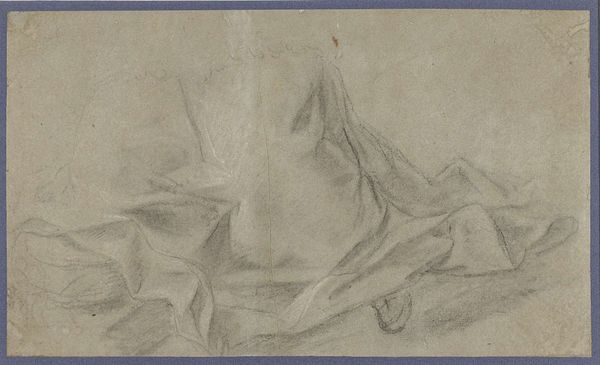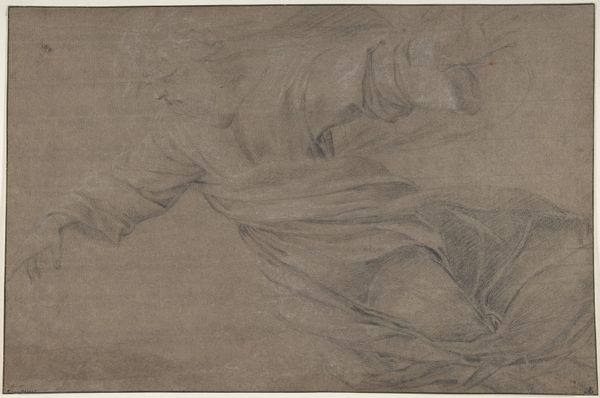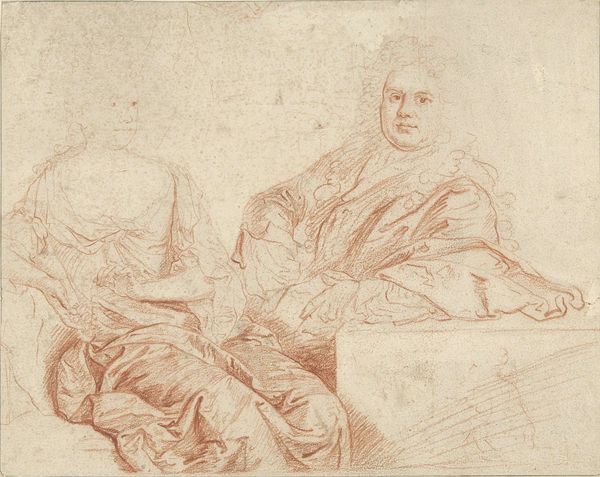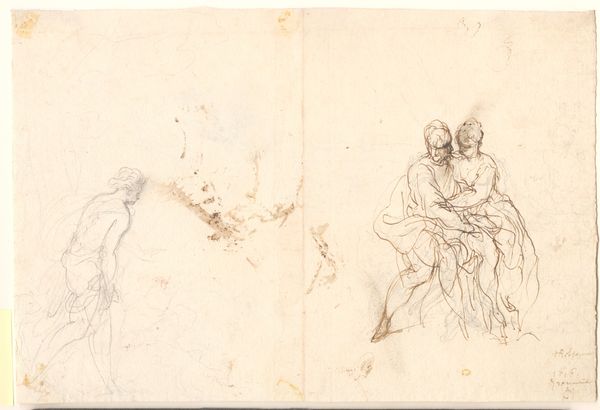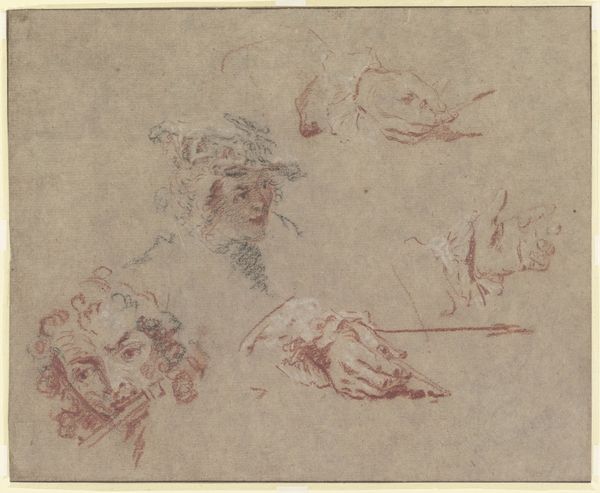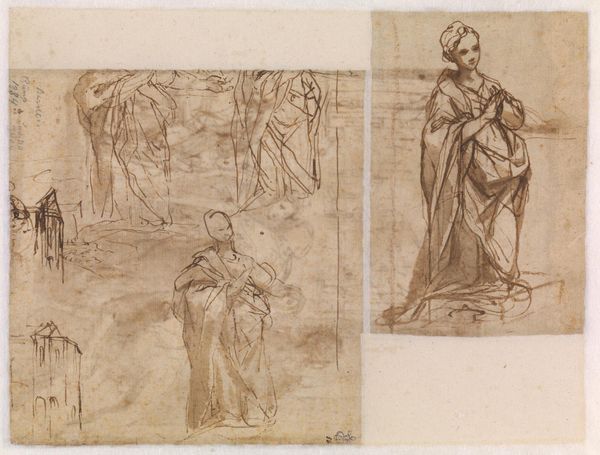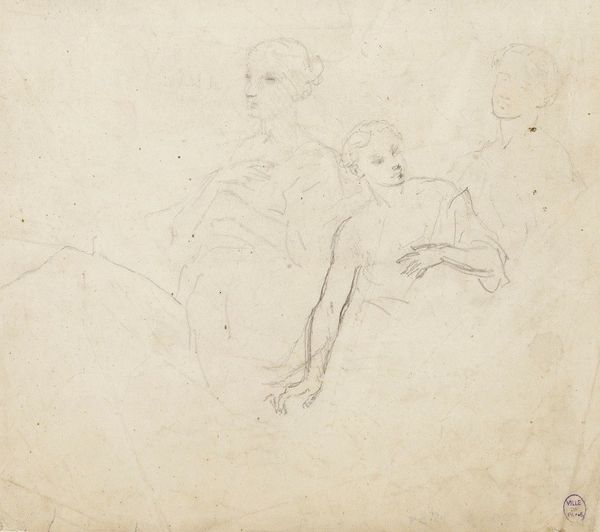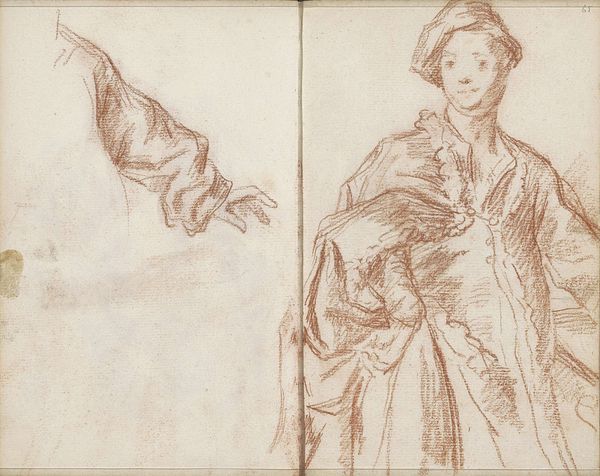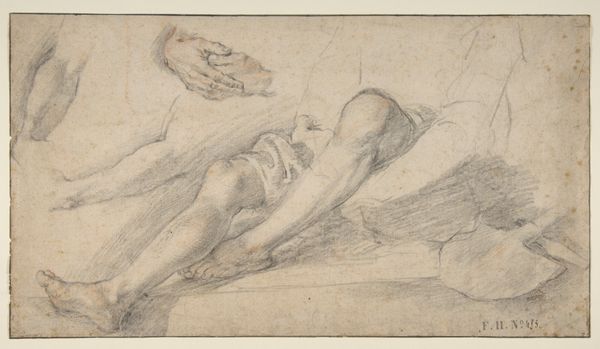
Onderarmen, een hand en een zittende man naast een tafel 1710 - 1772
0:00
0:00
drawing, paper, pencil
#
portrait
#
drawing
#
amateur sketch
#
table
#
toned paper
#
light pencil work
#
baroque
#
pencil sketch
#
paper
#
personal sketchbook
#
ink drawing experimentation
#
pencil
#
sketchbook drawing
#
pencil work
#
sketchbook art
Copyright: Rijks Museum: Open Domain
Petrus Johannes van Reysschoot made this drawing, Onderarmen, een hand en een zittende man naast een tafel, which translates to Forearms, a hand and a seated man next to a table, in the 18th century. Reysschoot, a Flemish painter active in the Austrian Netherlands, renders the male figure and disembodied limbs in sanguine chalk, a medium favored for its ability to capture the nuances of human form. The drawing invites us to consider the themes of identity and representation in the context of 18th-century European society. The seated man, likely a member of the bourgeoisie, is depicted with a relaxed posture, highlighting the privileges afforded to his class. The study of forearms and hands, while seemingly detached, speaks to the era's focus on physiognomy, the assessment of character through external features. These studies raise questions about whose bodies were deemed worthy of artistic representation and how such representations reinforced existing power structures. The lack of explicit identity invites a broad reflection on the nature of portraiture and the ways in which individual and social identities are constructed and perceived.
Comments
No comments
Be the first to comment and join the conversation on the ultimate creative platform.
